|
Plant: It is a large, straggly, perennial, riparian shrub with many
loosely branched stems. The Mulefat got its name because mules would get
fat by eating the leaves or perhaps because they became bloated from eating them.
|
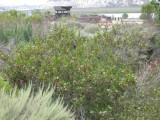
|
|
Flowers: The flowers are actually a clustered head of many tiny
flowers. The composite heads contain about 50 or more white flowers. Female
and male flowers are found on different shrubs.
|
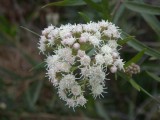 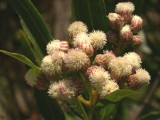
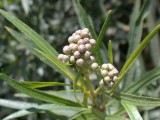
|
|
Leaf: The leaves are long and narrow (1-4 inches) with serrated edges.
The leaves of Mulefat can be distinguished from that of the willow by three
long veins. Branches are longitudinal grooved.
|
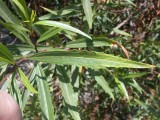
|





